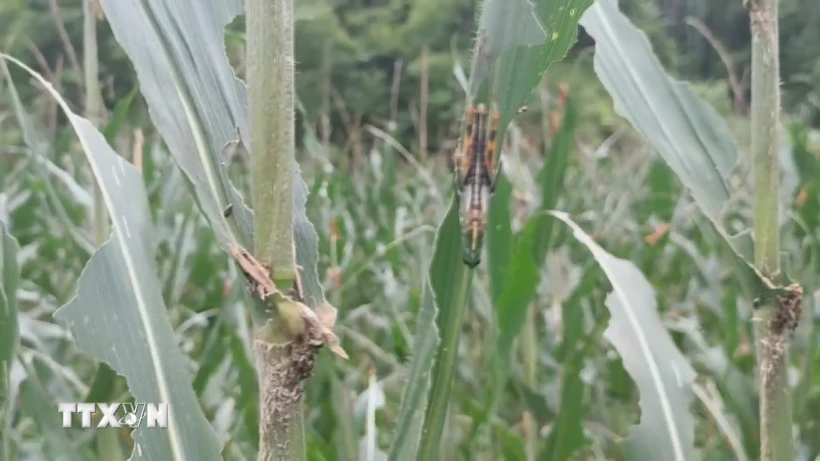HCMC – Bamboo locusts have infested 11 provinces in Vietnam’s northern midlands and mountainous regions, affecting over 1,000 hectares of land, the Ministry of Agriculture and Rural Development reported on Thursday.
The most heavily impacted province is Cao Bang, with 773 hectares infested. Other affected provinces include Bac Kan, Nghe An, Son La, Dien Bien, Lang Son, Phu Tho, Hoa Binh, Tuyen Quang, Quang Ninh, and Thanh Hoa.
Unusually high temperatures and early, intense heatwaves, coupled with frequent light rain, have created favorable conditions for the locusts to thrive. The locusts began causing damage in mid-April.
Currently, most locusts are in their nymph stage, making control efforts more feasible. However, they are expected to develop wings and form swarms within 10-20 days, which could lead to severe crop damage if not controlled.
The ministry has instructed local governments of the affected provinces to take immediate action. Authorities are advised to detect and manage locust populations early and organize spraying operations while the locusts are still wingless.
Provincial officials are closely monitoring the situation and developing action plans. They are also preparing budgets, materials, and manpower for control efforts. Public awareness campaigns are being conducted to instruct residents on timely and effective locust control measures.
The ministry has also called for cooperation from border guard stations in border areas to exchange information about locust activities. The Plant Protection Department is overseeing inspection, surveillance, and control activities.
The yellow-spined bamboo locust, along with other locust species, can form large swarms and migrate in search of food.
These locusts have caused significant damage to crops in China, Laos, and Vietnam in recent years. They first caused major damage in Vietnam in 2008 and continue to threaten northern mountainous regions.









